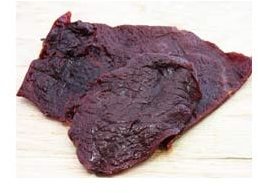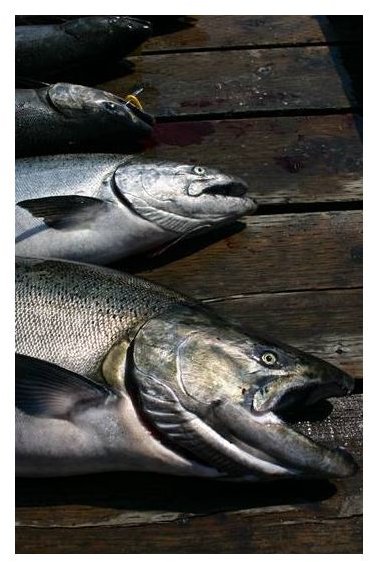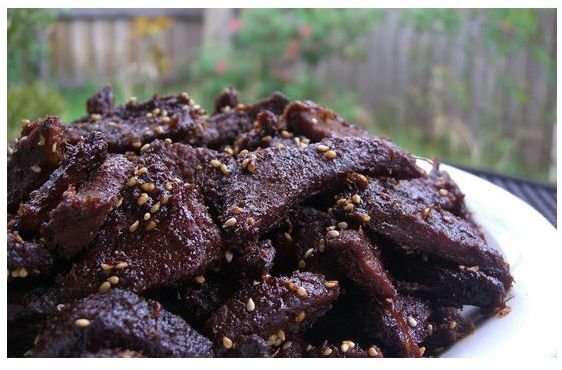Curing Meat in a Smokehouse: How to Cure & Smoke Meat
Curing meat in a smokehouse
Curing meat is no longer a necessity for people the way it used to be before we had refridgerators and freezers. But curing meat, or smoking it, is still a healthy and delicious way to eat and prepare meat (and fish and poultry too) plus, curing meat will preserve it so you can make a bunch in one go and enjoy it for a while.
People often confuse exactly what it means to cure, or smoke, meat in a smokehouse, and there are some basic pointers that you should be aware of.
-
Grilling and barbequing meat is very different from smoking meat. For meats to be considered smoked they can only be cooked at temperatures between 52 degrees F to 140 degrees F. This can be a process that takes anywhere between one hour and two weeks. Cured meats are cooked thoroughly both on the inside and the outside. The process of grilling and barbequing sears the outside of meat.
-
Sometimes meats will be smoked for a while and then cooked, but not always.
-
The longer the cooking time, the greater the loss of moisture from the meat, which results in a saltier end product with a longer shelf life.
Facts and Info About Smokehouses
-
A proper smokehouse must generate smoke, be able to maintain necessary temperatures and cook the inside of meats to the required temperature of

154 to 160 degrees F.
-
Most “smokers” sold at department stores are actually grills or barbeques.
-
Some meats need addtional cooking after using the smokehouse- they can be baked or poached as long as the temperature in the oven stays below 170 degrees F and the water is about 176 degrees F. The meat’s internal temperature should reach 154 degrees F.
-
If you caught a fish, cleaned and salted it and then cooked it over a smoldering fire, hanging from a stick, this would essentially be cooking in the most basic, but quite effective, smokehouse.
-
Smokehouses can be made complex and sophisticated, but all one needs to be considered a smokehouse is a source of smoke, a smoking chamber (or something to confine the smoke inside), sticks, screens or hooks to hang the meat, and a way to control the draft.
Cold, Warm, Hot or Wet Smoking

Cold smoking is usually done between 52 degrees F and 71 degrees F, but some argue that you can still cold smoke at up to 86 degrees F. It takes 1 to 14 days (with breaks in between smoking times) and is the oldest, and considered by many to be the best, method for curing meat in a smokehouse.
Warm smoking is done between 73-104 degrees F for anywhere between 4 to 48 hours, depending on the size of the meat. Warm smoking is done continuously.
Hot smoking involves continuously smoking your meat for half-an-hour to 2 hours at 105 degrees F to 140 degrees F- this technique results in moister meats. It is not recommened for large pieces of meat though.
Wet smoking can be done by placing a water dish (in certain smokers only) inside the smokehouse to increase the humidity. You can also dampen wood chips before curing your meat in any kind of smokehouse for a similar result.
How to Make Smoke
You can create smoke for your smokehouse in several ways, including:
- Firewood: to burn firewood you must have a second firepit for your smoker.
- Barbeque starter: use wood chips or sawdust and they will keep smoldering after they’ve caught.
- Gas burner: heat wood chips or sawdust over a gas burner.
- Hot coals: use hot coals for your wood chips.
Kinds of Wood to Use
Wood to use
Oak is by far the most used wood when it comes to smoking, but there are many more that you can use that will flavor your meat in different

ways. The following is a list of just some of them and the way they will enhance the taste of your meat:
- Alder: great for fish and poultry with a light, sweet flavor
- Almond: sweet, nutty flavor
- Citrus (lemon, grapefruit, orange, nectarine): light, fruity flavor that works well with most meats, fish and poultry
- Hickory: a good choice for beef and lamb- has a strong flavor
- Plum: best with poultry, fish and pork- mild and sweet
In addition the these, other woods that are great for smoking include: Acacia, Apple, Apricot, Birch, Black Walnut, Cherry, Fruit trees, Maple, Mulberry, Mesquite, Peach, Pear, Pecan and Walnut.
Wet or Dry Wood?
When deciding whether or not your wood should be wet, consider the following:
- Wet wood may be necessary in dryer climates as curing meat in a smokehouse is traditionally done in cold climates.
- Dry wood creates a stronger, smokier flavor.
- You can only use dry wood when cold smoking.
- You can soak dry wood in water and use it for hot smoking.
Conclusion
Curing meat in a smokehouse is a timeless way to prepare food. The process makes you feel in touch with our past as human beings, and is an amazingly rewarding way to cook your meats- not to mention how extremely tasty it is! The end result is low-fat, flavorful and preserved meat that you can store right in your cupboard.
If you enjoyed reading this than you might like to read: “Reduce Waste In Your Home Today”.
Credits
Resources
- Marianski, Stanley, Adam and Robert, 2007, “Meat Smoking and Smokehouse Design”, Outskirts Press, Denver, Colorado
Images
- https://static0.unlike.net/system/photos/0042/4107/jerky.jpg
- https://beefjerkyrecipes.com
- https://i.ehow.com/images/GlobalPhoto/Articles/5142966/257408-main_Full.jpg
- https://static.squidoo.com/resize/squidoo_images/-1/draft_lens1615657module13010475photo_1229093361a_cowgirl_drum_smoker.jpg
